Topics
- active learning (18)
- research assignments (6)
- libraries (1)
- literature-based learning (2)
- multimedia (5)
- museums (6)
- object learning (7)
- online learning (5)
- peer instruction (10)
- storytelling (2)
- learning management system (2)
- syllabus design (3)
- teaching empathy (3)
- teaching fellows (1)
- lecture (3)
- learning goals (8)
- assessment (6)
- data (3)
- backward design (3)
- blended approaches (12)
- case-based learning (8)
- classroom contracts (7)
- classrooms and space (3)
- collaborative learning (27)
- community events (1)
- course transformation (7)
- devices (3)
- learning by making (5)
- discussion (24)
- engaged scholarship (4)
- experiential learning (16)
- feedback (18)
- group work (8)
- guest speakers (7)
- interdisciplinary (6)
- leadership (3)
Send feedback
Subscribe
Copyright © 2024 The President and Fellows of Harvard College | Privacy | Accessibility | Digital Accessibility | Report Copyright Infringement

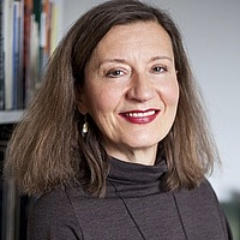 Ewa Lajer-Burcharth, William Dorr Boardman Professor of Fine Arts, is an art historian who focuses on 18th- and 19th-century European and contemporary post-1970s art. Lajer-Burcharth uses physical objects – such as paintings, sculptures, and textile arts – to enable more immersive forms of learning that enable students to experience objects of study in a hands-on way that is not possible with text-heavy teaching methods. These objects serve as a primary teaching tool for encouraging new perspectives and interrogating original sources. Students examine various objects from museum and library collections under the expert guidance of curators, and eventually assist in the curation of an exhibit. This allows students to have hands-on experience in both understanding and creating, rather than be solely trapped by reading and speaking. While her courses use physical objects as a point of reference, similar opportunities exist in other classroom contexts where students can contextualize the motivations of authors, musicians, and inventors, for example.
Ewa Lajer-Burcharth, William Dorr Boardman Professor of Fine Arts, is an art historian who focuses on 18th- and 19th-century European and contemporary post-1970s art. Lajer-Burcharth uses physical objects – such as paintings, sculptures, and textile arts – to enable more immersive forms of learning that enable students to experience objects of study in a hands-on way that is not possible with text-heavy teaching methods. These objects serve as a primary teaching tool for encouraging new perspectives and interrogating original sources. Students examine various objects from museum and library collections under the expert guidance of curators, and eventually assist in the curation of an exhibit. This allows students to have hands-on experience in both understanding and creating, rather than be solely trapped by reading and speaking. While her courses use physical objects as a point of reference, similar opportunities exist in other classroom contexts where students can contextualize the motivations of authors, musicians, and inventors, for example.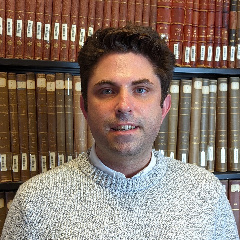 The debate over assessments—their frequency, structure, and value—has become more vibrant in recent years, first with the onset of COVID-19 and now with the advent of Generative AI. As instructors experiment with different approaches, the Math Department has increased its emphasis on assessments, yielding some early successes.
The debate over assessments—their frequency, structure, and value—has become more vibrant in recent years, first with the onset of COVID-19 and now with the advent of Generative AI. As instructors experiment with different approaches, the Math Department has increased its emphasis on assessments, yielding some early successes.
 Stephanie Pierce, Professor of Organismic and Evolutionary Biology, and Mansi Srivastava, John L. Loeb Associate Professor of the Natural Sciences co-developed a course for undergraduates with a goal of reaching a larger number of students and exploring similar sets of questions from different angles. They bring their expertise together in a novel course that truly represents the aims of integrative biology:
Stephanie Pierce, Professor of Organismic and Evolutionary Biology, and Mansi Srivastava, John L. Loeb Associate Professor of the Natural Sciences co-developed a course for undergraduates with a goal of reaching a larger number of students and exploring similar sets of questions from different angles. They bring their expertise together in a novel course that truly represents the aims of integrative biology: 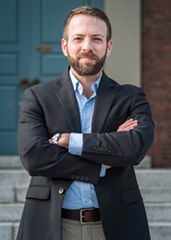 Shai Dromi, Associate Senior Lecturer on Sociology (FAS), teaches courses on philanthropy, activism, and collective identity. Dromi frequently incorporates active learning exercises and collaborations into his courses. In his undergraduate course, Philanthropy and the Nonprofit Sector, he partners with a wide variety of Harvard offices, including
Shai Dromi, Associate Senior Lecturer on Sociology (FAS), teaches courses on philanthropy, activism, and collective identity. Dromi frequently incorporates active learning exercises and collaborations into his courses. In his undergraduate course, Philanthropy and the Nonprofit Sector, he partners with a wide variety of Harvard offices, including 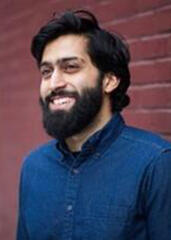 Musa Syeed, Briggs Copeland Lecturer on English, teaches screenwriting in the Creative Writing Program. Students are introduced to documentary and hybrid filmmaking in his course,
Musa Syeed, Briggs Copeland Lecturer on English, teaches screenwriting in the Creative Writing Program. Students are introduced to documentary and hybrid filmmaking in his course, 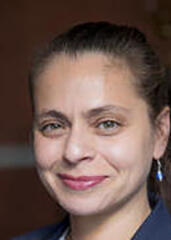 Flavia Peréa, Lecturer in Sociology (FAS) and Director of the Mindich Program in Engaged Scholarship, teaches
Flavia Peréa, Lecturer in Sociology (FAS) and Director of the Mindich Program in Engaged Scholarship, teaches 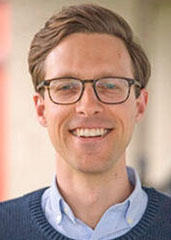 Kaighin McColl, Assistant Professor of Earth and Planetary Sciences and of Environmental Science and Engineering, is a hydrologist who extended his General Education course,
Kaighin McColl, Assistant Professor of Earth and Planetary Sciences and of Environmental Science and Engineering, is a hydrologist who extended his General Education course, 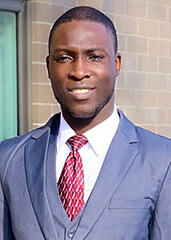 Taiwo Ehineni,
Taiwo Ehineni, 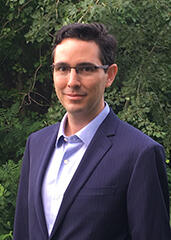 David Atherton, Assistant Professor of East Asian Languages and Civilizations, taught
David Atherton, Assistant Professor of East Asian Languages and Civilizations, taught 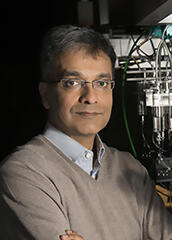 Aravinthan D.T. Samuel, Professor of Physics
Aravinthan D.T. Samuel, Professor of Physics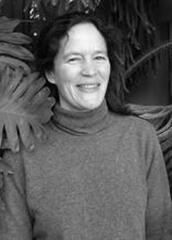 Robin Gottlieb, Professor of the Practice of Teaching Mathematics, aims to make mathematics accessible and exciting to all students in each of her courses. “When students come to Harvard, they have very different but set ideas of what happens in the classroom,” Gottlieb explains. “In many high school math classrooms, the dominant cultural norm is an ‘I do, you do, we do’ model. The teacher is expected to tell you what to do. One of my main objectives is to shift the culture of the classroom so that students become mathematical thinkers.” Gottlieb works alongside colleagues on the preceptor team to construct classrooms in which students actively participate in the development of ideas. Inspired by colleagues’ such as Eric Mazur’s active learning and John Asher Johnson’s
Robin Gottlieb, Professor of the Practice of Teaching Mathematics, aims to make mathematics accessible and exciting to all students in each of her courses. “When students come to Harvard, they have very different but set ideas of what happens in the classroom,” Gottlieb explains. “In many high school math classrooms, the dominant cultural norm is an ‘I do, you do, we do’ model. The teacher is expected to tell you what to do. One of my main objectives is to shift the culture of the classroom so that students become mathematical thinkers.” Gottlieb works alongside colleagues on the preceptor team to construct classrooms in which students actively participate in the development of ideas. Inspired by colleagues’ such as Eric Mazur’s active learning and John Asher Johnson’s 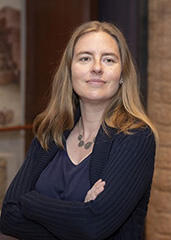 Christina Warinner, Associate Professor of Anthropology
Christina Warinner, Associate Professor of Anthropology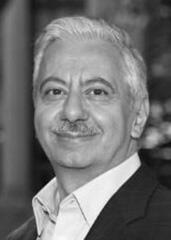
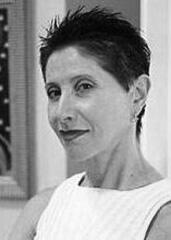 Fawwaz Habbal, Executive Dean for Education and Research and Senior Lecturer on Applied Physics, and Doris Sommer, Ira Jewell Williams, Jr. Professor of Romance Languages and Literatures and of African and African American Studies, co-teach systems-level thinking. Their course, Aesthetic Pleasure and Smart Design: Janus Faces the Future, trains students to look at complex problems from the perspective of both artists and engineers. This requires the development of skills in scientific assessment and disinterested aesthetic judgment. In the spirit of
Fawwaz Habbal, Executive Dean for Education and Research and Senior Lecturer on Applied Physics, and Doris Sommer, Ira Jewell Williams, Jr. Professor of Romance Languages and Literatures and of African and African American Studies, co-teach systems-level thinking. Their course, Aesthetic Pleasure and Smart Design: Janus Faces the Future, trains students to look at complex problems from the perspective of both artists and engineers. This requires the development of skills in scientific assessment and disinterested aesthetic judgment. In the spirit of 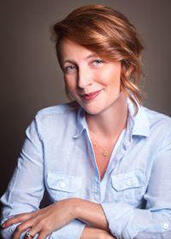 Nicole Mills, Senior Preceptor in Romance Languages and Literatures, helps students grasp the French language and experience the culture through “alternative classroom contexts.” Specifically, students participate in virtual reality (VR) experiences alongside the curriculum. During the first week of the semester, students
Nicole Mills, Senior Preceptor in Romance Languages and Literatures, helps students grasp the French language and experience the culture through “alternative classroom contexts.” Specifically, students participate in virtual reality (VR) experiences alongside the curriculum. During the first week of the semester, students 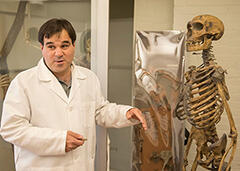 Terence D. Capellini, Richard B Wolf Associate Professor of Human Evolutionary Biology, empowers students to grow as researchers in his
Terence D. Capellini, Richard B Wolf Associate Professor of Human Evolutionary Biology, empowers students to grow as researchers in his